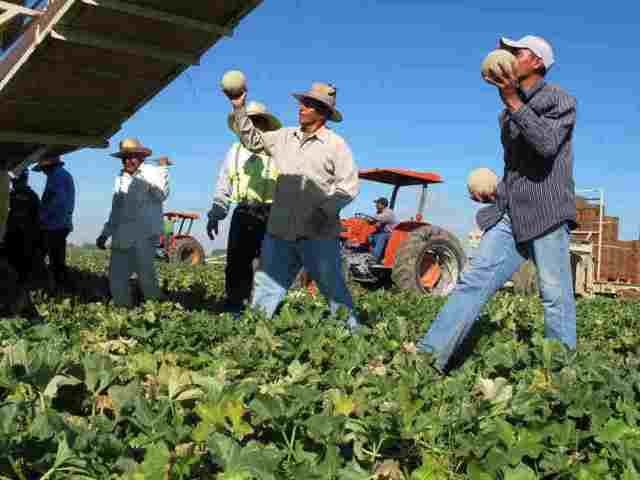Persons 75 or older and frontline essential workers should be the next group to get the vaccine against the Chinese coronavirus, a panel of medical experts advising the U.S. Centers for Disease Control and Prevention (CDC) recommended Sunday.
The recommendations are just guidelines, and it is up to the states to prioritize their doses.
On Sunday, the influential Advisory Committee on Immunization Practices (ACIP) designated persons 65 to 74, 16 to 64 with high-risk medical conditions, and essential workers not included in the second recommended wave of vaccinations as the third prioritization group.
On Sunday, the panel noted:
For purposes of this recommendation, the following essential workers are considered frontline: fire fighters, police officers, corrections officers, food and agricultural workers, Postal Service workers, manufacturing workers, grocery store workers, public transit workers, those who work in the education sector (teachers, and support staff), as well as daycare workers.
Many agricultural workers are in the country illegally.
Advocates, including members of the state’s vaccine advisory committee, have been pushing California Gov. Gavin Newsom (D) to ensure undocumented farmworkers and caretakers who get paid under the table are among the first people vaccinated.
California considers itself a sanctuary state for illegals.
The influential CDC panel now recommends that agricultural workers be part of the second priority group to get the vaccine.
Ultimately, states will devise their vaccine distribution plans and decide whether to follow the CDC panel’s recommendations.
The CDC Director has already adopted the panel’s recommendations to become official once published in the nation’s top healthy agency’s Morbidity and Mortality Weekly Report [MMWR].
Sunday’s decision by the ACIP panel came about three weeks after it advised that health care workers and nursing home residents should be the first group to receive the limited amount of coronavirus vaccine shots available at the moment.
The CDC has encouraged states to create three-phased plans for vaccine distribution based on the dose’s availability. It has urged states to break down the phases into subsections — Phase 1 (a), the first group to receive the limited number of doses at the time, Phase 1 (b), the second, and Phase 1 (c), the third.
Phase 1 refers to the limited availability of coronavirus vaccine doses. Phase 2 is when the U.S. has many doses available, possibly enough to meet demand. Phase 3 is when there are sufficient doses for the population.
Some states have deviated from some of the committee’s advice and decided to vaccinate inmates before the general population.
Echoing Breitbart News, the Prison Policy Initiative (PPI), a non-profit thinktank, recently assessed vaccine distribution proposals in 49 states and found that up to ten states will vaccinate inmates before anyone in the general population as part of Phase 1. At least 40 states have decided to inoculate corrections staff.
Referring to California, the thinktank noted that the “plan was unclear, but from the context likely belong to Phase 1 or Phase 2.”
There are currently insufficient doses to vaccinate all “essential” workers, reportedly estimated by the U.S. Department of Homeland Security to stand at 87 million.
“Essential workers who will have to wait for Phase 1c for vaccine include people who maintain water and wastewater systems, people who work in the IT and communications sector, members of the media, and public safety workers,” the medical news outlet STAT noted Sunday.
Operation Warp Speed, the Trump Administration’s multi-billion effort to fast track the vaccines’ development, reportedly estimates there will be enough doses to vaccinate 20 million people by the end of December.
“Another 30 million in January, and an additional 50 million by the end of February,” STAT reported, adding:
Phase 1a of the vaccination effort, which began last week, involves offering vaccine to 24 million people. In Phase 1b, 49 million people will be eligible to receive vaccine. Phase 1c is a much larger group, including roughly 129 million people.
In total, the first three priority groups will cover 202 million people — double the number of people the country expects to have vaccine for by the end of February.
The U.S. population stands at over 330 million at the moment.
According to Operation Warp Speed, there should be enough doses to inoculate all Americans by next June.
Some experts assert that there is no evidence the two vaccines approved by the U.S. Food and Drug Administration (FDA) and other countries would not work to protect against a new strain of the coronavirus that has surfaced in the United Kingdom and Australia.
U.S. officials have yet to detect the mutated strain in America. So far, the U.S. has approved two vaccines for emergency use — the first one was developed by Pfizer-BionTech and the most recent one by Moderna. Both require two doses that have begun to be administered this month.

COMMENTS
Please let us know if you're having issues with commenting.